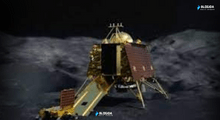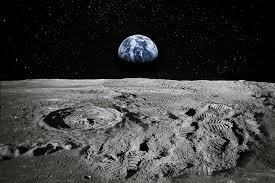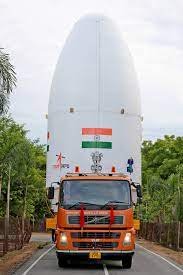The Chandrayaan-3 mission, which is operated by the Indian Space Research Organization (ISRO), successfully launched on Friday amid cheers from a large audience gathered in Sriharikota, Andhra Pradesh, to witness the launch.
Here are five facts you may not have known about the Chandrayaan-3 – Space mission before it began its orbit around the Earth:

Chandrayaan-3’s enhancements in comparison to its predecessor
The Chandrayaan-3 – Space mission will be virtually equal to the Chandrayaan-2 mission, which ultimately failed due to the crash landing of the Vikram lander on the surface of the moon during its final stages. ISRO believes that the impending mission will have a competitive advantage over the previous one as a result of a number of significant enhancements.

This includes a larger fuel tank, solar panels on all four sides instead of just two, new navigation equipment, updated software, additional strength testing, and other modifications to the lander.
Conducting wind tunnel testing in Bangalore More than 3,000 wind tunnel tests were conducted on the Launch Vehicle Mark-III (LVM3) in Bengaluru at the facilities of the Council for Scientific and Industrial Research-National Aerospace Laboratories (CSIR-NAL). The LVM3 was responsible for launching the Chandrayaan-3 spacecraft into orbit around the Earth. Due to these tests, scientists working on the mission gained a greater understanding of the rocket’s aerodynamics and how air will flow around it during flight.
ISRO considers the ability to perform soft landings to be an essential element of technology

ISRO has more than proven its worth over the past two decades by attaining success in a substantial number of missions. To compete with the “big boys” of space exploration, namely the United States, Russia, and China, it is still missing one technological capability. This capability is the capacity to perform a soft lunar landing.
The failure of the Chandrayaan-2 mission draped around the Indian Space Research Organization’s (ISRO) neck like an albatross. If it is not feasible to land a spacecraft on the Moon, it will be impossible to explore its surface, searching for valuable minerals and attempting to understand the origins of the solar system. Before the organization can move on to its more ambitious objectives, such as sending astronauts on future space missions, it must prove that it is capable of landing a spacecraft successfully on the Moon.
Why is ISRO interested in exploring the south pole of the Moon?
Each and every spacecraft that has ever landed on the Moon has done so near the celestial body’s equator. This is due to the terrain and environment there being more suitable for human habitation. Polar regions present a landscape that is significantly more difficult to navigate for lunar missions. Consequently, why does ISRO plan to conduct research at the South Pole?

Due to the extremely low temperatures that predominate in the polar region, this region can be compared to a “time capsule” because there is little to no change there. The minerals and soil in that region may provide researchers with clues about the origins of the solar system. There is also the possibility of discovering water-based ice in this area of the Moon.
How did Sriharikota become the Launchpad of India?
The only spaceport in the country is located at the Satish Dhawan Space Center (SDSC) in Sriharikota. This spaceport is used to launch spacecraft and satellites. However, what made Sriharikota the optimal location for the center’s establishment?

Its eastern coast location, which makes the whole thing easier to launch rockets in the direction of the east, is one of the most influential factors in its favor. Launching rockets in the direction of the east enables them to take advantage of the additional momentum provided by the Earth’s rotation. The fact that it happens to be located so close to the equator is an additional factor to consider. Launched from the equator, rockets are able to derive the maximum possible benefit from the Earth’s rotation.
This decision was influenced by a number of other factors, including the fact that Sriharikota is a sparsely populated area near the water. You can learn more about why India selected Sriharikota as its spaceport by perusing the full account on this page.
The Chandrayaan-3 – Space mission data will enhance our understanding of the Moon’s history, evolution, and composition, including the possibility of ice deposits containing liquid water. In addition, it will aid in the identification of valuable resources that can be utilized by future human expeditions to the sole natural satellite of the planet.
FAQ on Chandrayaan 3
- What is current status of Chandrayaan-3?
On August 23, Chandrayaan-3 will attempt a soft landing in the vicinity of the Moon’s south pole for the first time. Following a successful deboost, the Vikram lander and Pragyan rover of Chandrayaan-3 have now decreased their orbit to 113 km by 157 km.
- Is Chandrayaan-3 landed on moon?
The historic landing’s time and date were revealed by ISRO via a tweet that said, “Chandrayaan-3” is scheduled to land on the Moon on August 23, 2023, around 18:04 Hrs. IST.
- Who will land first Chandrayaan-3 or Luna 25?
However, Chandrayaan-3 and Luna-25 are expected to land only a few days apart. While Luna-25 is supposed to touch down on August 21, Chandrayaan-3 is supposed to land on August 23–24. A landing on the lunar south pole is anticipated to be difficult because to the rough terrain.
- Is Chandrayaan-1 still active?
The mission, which was initiated on October 22nd, 2008, is planned to run for two years. On August 28, 2009, at about 0:00 UTC, communication with the spacecraft abruptly ceased.
- Where is Chandrayaan-3 now?
Chandrayaan-3 is scheduled to touch down on the moon on Wednesday, August 23, 2023, at 6:04 PM, according to information released on Sunday by the Indian Space Research Organisation (ISRO). The spacecraft is currently three days away from reaching the south pole of the moon, its intended target.
- What is the total weight of Chandrayaan-3?
Then, ISRO disclosed details on the Chandrayaan 3 vehicle, including its weight. According to the most recent information, Chandrayaan 3 would weigh 3900 kg when it is launched by LMV3, and scientists believe that in order for a mission to be successful, it must be launched.
- Chandrayaan-3 lander and rover name ?
The third and most current lunar exploration mission undertaken by the Indian Space Research Organization (ISRO) as part of the Chandrayaan program is known as Chandrayaan-3 (-, a sanskrit word which translates as Moon-craft, pronunciation). It comprises of the Chandrayaan-2-like Pragyan rover and the Vikram lander.
For more updates – Today News






































+ There are no comments
Add yours